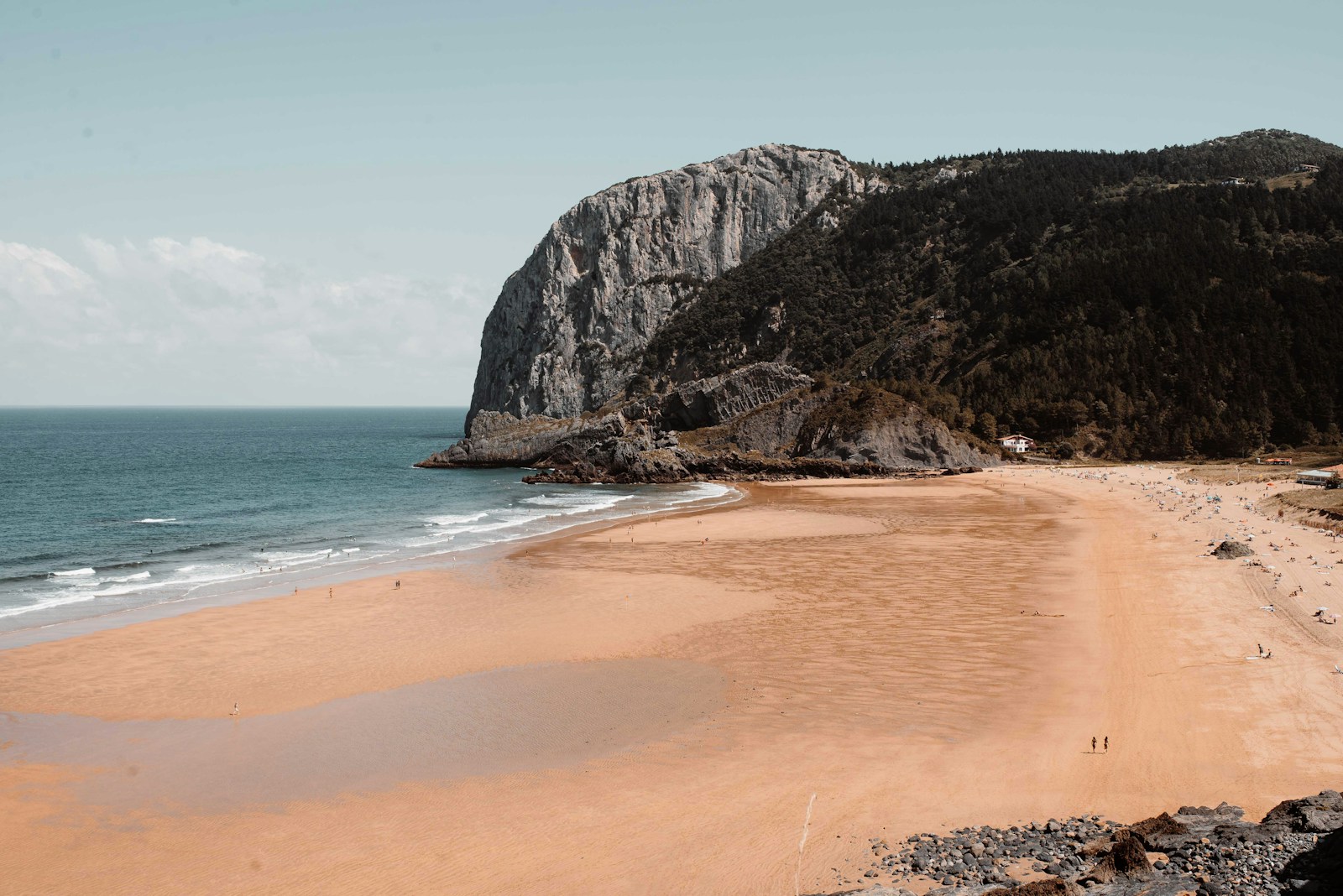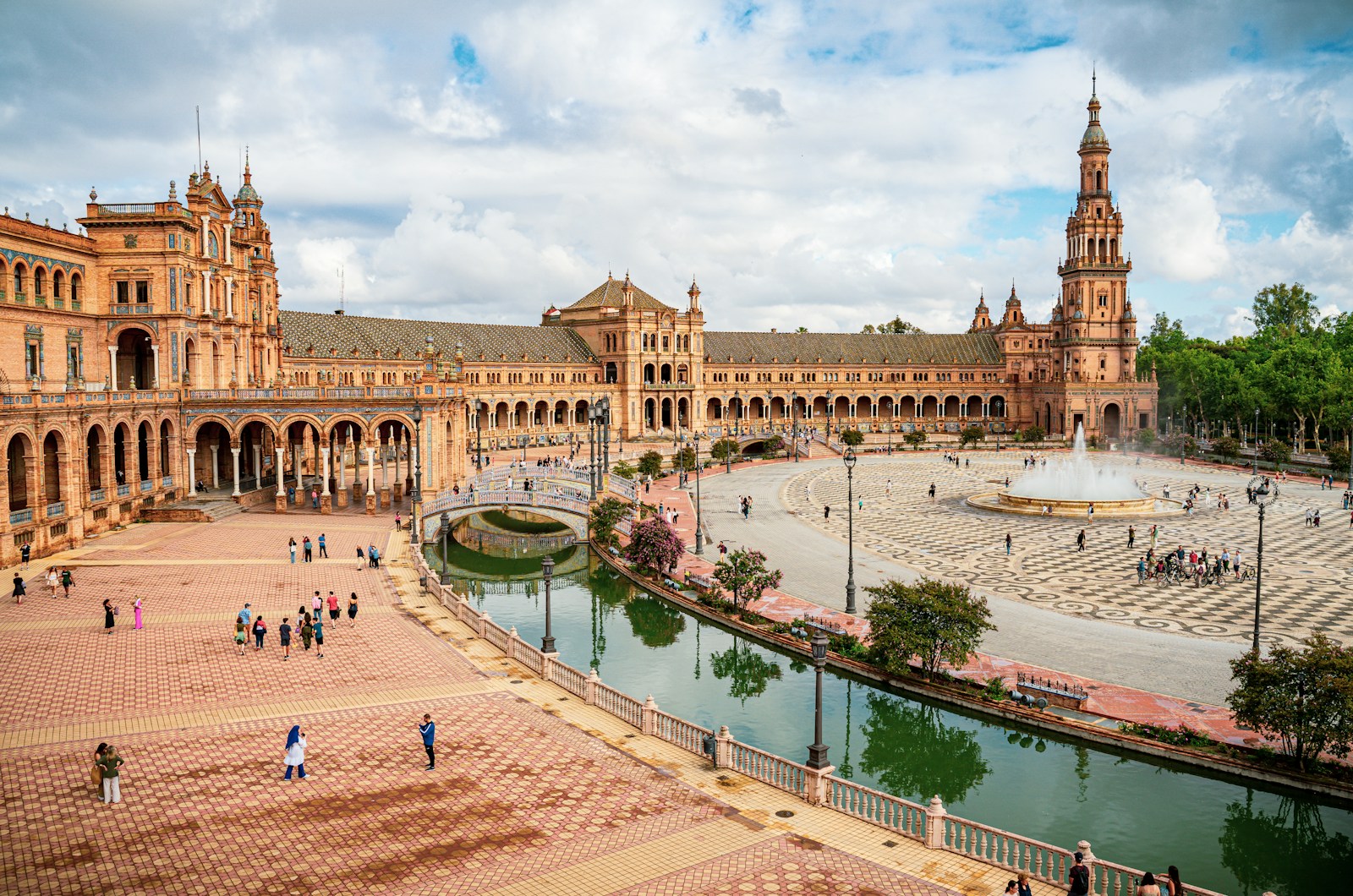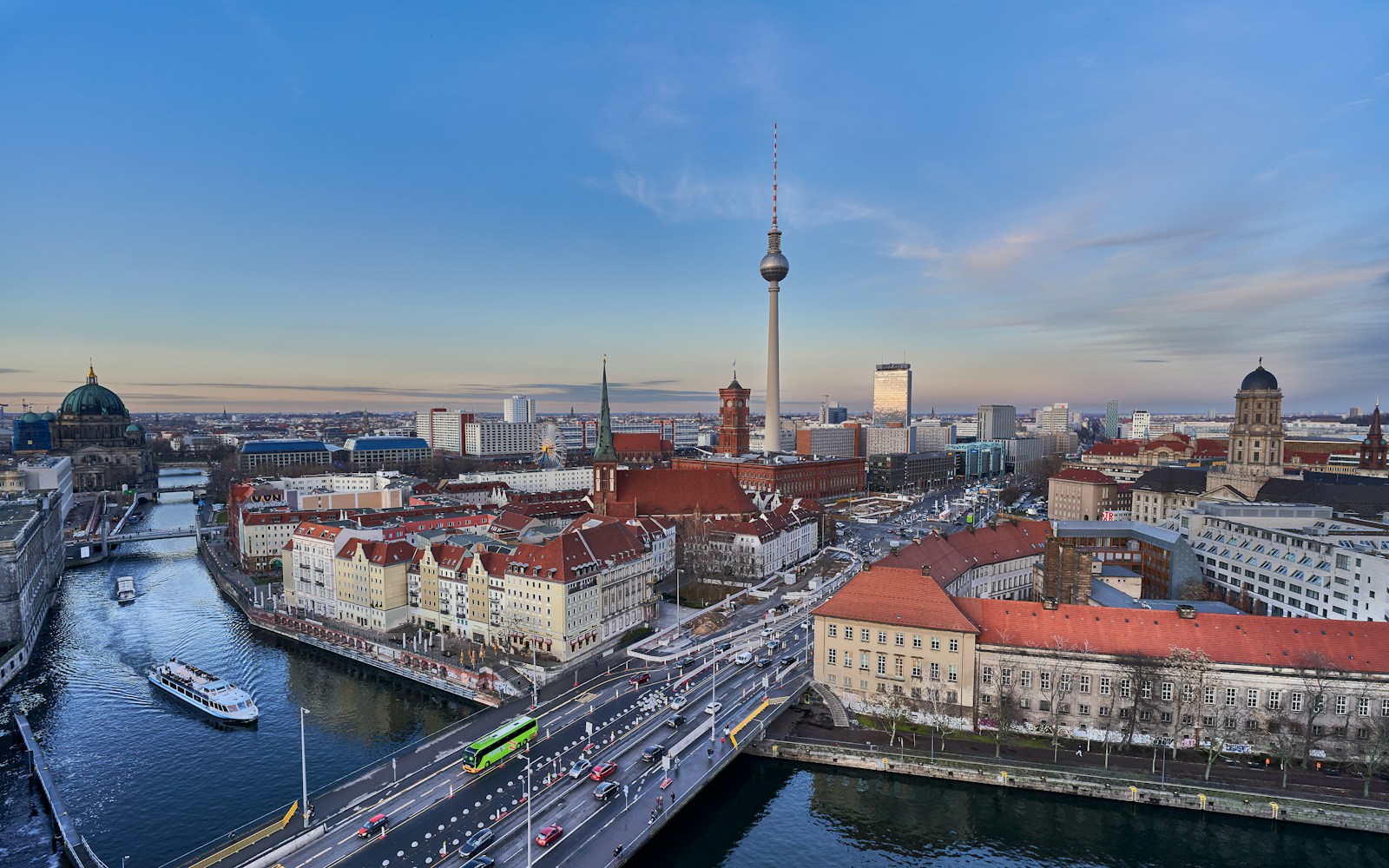Basque Community of Spain is the territorial set up located in the northern part of Spain and characterized by massive history and culture ,and beautiful nature. It is the perfect place for tourists due to the beautiful greenery along the coastline and the attractive mountains in the distance. Regardless of whether you in accompanied by friends, relatives or you may be a lone traveler, the Basque Country has something for everyone. There always is something epic about this place – be it sloping boulevards and mouthwateringly delicious food or centuries-old history. It is for this reason that, in this guide, we will take a look at what we consider to be seven of the most beautiful and typical Basque villages. In particular, these different villages of this beautiful piece of the world are different in some ways and fascinating to visit.
Charming Basque Villages
Getaria: Fashion History and the Gem of the Coast
Getaria is quite small and has a particularly historic past and an especially known connection to the world of fashion. That is why this lively town can be proud of a famous person born there, namely Cristobal Balenciaga, one of the most significant figures of fashion ever. Haute couture in specifically highlighted at Balenciaga museum in the village that is dedicated to his life and work. This museum not only displays his beautiful creations but also narrates his history regarding the fashion line.
Getaria is one of the most famous tourist destinations in Spain, or even in Europe, as it combines the historical and cultural attractions with stunning views. The medieval town is surrounded by a wall and this only increases its historical background. The village is located on the slope, on the left bank of the Urola River ; it dominates the silhouette of Mount San Antón, the “Mouse of Getaria” as it is called. Due to reception of rocky layers and sharp slopes at both of the sides, the geographical structure of the area is sharp and scenic but planetary.
Any discussion of Getaria has to include its food. The village is particularly famous for the abundance of available food types, which are quite versatile; one of them being grilled fish. Local chefs know how to properly cook local seafood most of which is procured within the day it is to be prepared. Accompanied with a glass of Txakoli- a slightly sparkling, white locally made wine, makes it the true essence of Basque dining.
Pasai Donibane: A brilliant which is nestled in between mountains.
Pasai Donibane which is considered to be one of the most picturesque villages in the area of Basque country is located on a hill between the Ulia and Jaizkibel mountains. Pasai Donibane is a charming village situated in the east of Guipúzcoa and is neighbor to Pasai Antxo and Pasai San Pedro villages. All the three villages can be recommended for visiting, though three are more attractive and interesting than the others – Pasai Donibane.
It boasts of beautiful architecture whose houses and stores are painted in bright and beautiful colors with predominant blues that face a peaceful and calm bay. The diction reflected in the housing also adds a jovial feeling to the village making it lively to study. Donibane Kalea is a main street, but it is not wide; this is the place to get a feel of the village’s snugness. This is a winding cobblestone street flanked with centuries old Basque stone houses that heads to the Plaza de Santiago; which is a square at the entrance of which there is a breathtaking view of the bay.
Due to its backdrop and cultural significance, Pasai Donibane is an ideal area for a walk. Many of the buildings in the village are antique going back to the earlier centuries; this reflected in the arrangement of the buildings in the village. Visiting Pasai Donibane you get a feeling that you have come to another era as the pace of life there is really relaxed.
Hondarribia: Border Town Teems in Colors and Is Rich in History
Hondarribia is an actively developing town situated on the border with France, more precisely, the border is the Bidasoa River. This is a beautiful town, charming with the paint work on buildings, and with a buzz to it, especially during the tourist season which is summer. They all say that Hondarribia is a beautiful town, however, this town is a nymph of history and cultural rolls.
The most famous part of the town has to be the area of the historical center, especially the old quarter of fishermen known as La Marina. This place is facinating to watch as most of the balconies are painted bright colors and young geraniums and other flowers thrive in pots. The bright colored replacement of the walls and roofs of the homes, along with the tiny, uneven streets add to the classic Basque vibe. La Marina is also rich in cider houses, Although wine is the most famous drink in the basque country, cider is also very famous and is served with seafood and other local specialties.
Hondarribia’s Aveida del Mar is filled with stately buildings all of which has a story behind it as does Hondarribia. The Hondarribia main square is the Plaza de Armas and it is enclosed by buildings with history; one of them is within the old town and accordingly the Parador of Hondarribia . Within the structure of the Parador, a hotel with high standard accommodation, the site of Charles V Castle has become a proposal of an unforgettable night for being built in one of the most important references of Spanish history.
This is because the town lies on the coast hence visitors can as well engage in sunbathing and beach activities on any of the nearby stations including Hondarribia Beach with yellow sand and blue water. Adjacent to the right side of the town, is the famous Hondarribia Breakwater whereas the French border is on the other side which leads to the neat sandy beach of Hendaye.
Tolosa: The historical beauty and importance of the city.
Tolosa is an inland village situated in the province of Guipuzcoa with apparently a most significant historical as well as architectural importance. Tolosa, with a population of about 3000 people is one of the several towns with appreciable cultural and historical values. Tolosa is a town in the Basque Country of northern Spain approximately 30 minutes by car from San Sebastian, and 20 km from the border with Navarre and thus ideal for a day trip.
Most of the parts of Tolosa have had their fair share of the historic timeline and a tour through the narrow alley and charming piazzas of the town will explain it. Among them, it is possible to distinguish Plaza de Euskal Herria, which is designed as a central square with the surrounding constructions of the older periods. The parish church is another place of tourist interest that dates back to the 17 century and is called Santa María. This church indeed forms a part of religious marvelous building that represents the historical importance of the town.
It also has several palaces among them Atodo and Aramburur palaces that testify the noble background of the Tolosa town. These are big massive structures with well carved exterior, and interior designs that provide a glimpse of how the royalty used to live.
A walk through Tolosa cannot be completed without paying a visit to the Tinglado market which has a wall made from semicircular arches. This market is typically opened every Saturday and Sunday, as the farmers and the ranchers from the nearby areas bring with them fresh vegetables, fruits and other products as well as local crafted items. The market is considerably active with lots of energy and it provides the tourists with the true essence of Basque culture.
Bermeo: A seafaring village in the biosphere of the Gilman Gorge region.
Bermeo has one of the largest fleets of inshore fishing boats in the Basque region which is a reflection of this region’s prosperous past related to fishing.
it contains a seaport as well with many small colorful painted houses by the coast and fishing boats anchored in the marina. The climate and the glance of the sea are another factors which all make Bermeo to be a paradise for tourist who want to sample the coastal side of the Basque country.
Bermeo’s old town is no less picturesque; this area can boast of the Plaza Arana, the Church of Santa María, the Ercilla tower, etc. The town is honoured with the neo classical architectural wonder of the church of Santa María. The Ladera park can also be visited nearby, and there is also Fishermen’s Museum describing the history of the village.
Undoubtedly one of the most visited sites close to Bermeo is the island of San Juan de Gaztelugatxe, a hermitage of the 10th century. Thus, the hermitage located on the top of the hill can be accessed by a flight of 200 step made of stone. Not only do people go there for religious reasons but it is also one of the tourist destinations due to splendid scenic beauty and tough locations. The island of San Juan de Gaztelugatxe rose to the world prominence due to the shooting of the famous series ‘Game of Thrones’.
Durango: Welcoming and Warm, A town with great Historical Significance
This is arguably the reason as to why Durango, which is sandwiched between the three provincial capitals of San Sebastián, Bilbao as well as Vitoria boasts of a rich history. Being connected with Carlist wars, as these fights were lasting for more than four centuries, Durango has a long and rather rich history. Previously known as Villanueva de Tavira, the town was able to maintain a majority of its medieval historic district, which makes the town an archetypal stop for history lovers.
Elorrio has various important sites; these are the Church of San Pedro de Tabira erected in the 16th century, the Town Hall which is found at the Gernikako Arbola plaze in Elorrio and the of Atxondo Valley. These Web sites are set within the town’s architectural style and afford an opportunity to get a feel of Durango.
Durango is also very scenic, of great interest being the Kurutziaga Cross, which is a museum sized Gothic sculpture outside of the city. The manifestation of this cross, special in its carving and in the perception of its history, is of interest to a vast number of people who are attracted to the art and religious landmarks.
The location of this place at the heart of the state gives it an added vantage in that Durango serves as a perfect hub as one forms a plan to tour the neighboring states. This gives the town credibility as a culturally and scenic destination which gives travelers the full picture of what life in Basque is like.
Elantxobe: A Cliffside Haven
The village Elantxobe is now listed as one of the picturesque villages in Basque Country; this is a small and isolated village with houses built on the hill between mountains. This is a beautiful village characterized by a seaport enclosed by the Cape Ogoño and beautiful houses resident on the cliffs. The homes that are built on the slopes give the village a rather menacing look as if the dwellings are a part of the hill.
Thus, Elantxobe inhabitants stress that their city is not large, it is rather isolated, and this is what gives it a mysterious flair. The village is quiet and free from the usual crowds of larger populated regions, thus giving the visitors chance to relax. Because of the number of narrow roads and formal structures in the town, Elantxobe may make you feel like you are in a place from another era.
Crucial infrastructures include the village’s seaport, where fishermen from the village operate from and a beautiful view for tourists. One place I find quite charming is the harbor area, this is because the water is rather clear and it has boats of different colors.
Elantxobe is also well positioned to also explore other nearby regions and areas. Adjacent to it you can find other nice villages like Ibarranguelua, Ea and Ispaster, with their particular features and beautiful landscapes. The village is located by the Sea and the Mountains and as such anyone interested in the natural environment will find it perfect to go hiking, fishing, or just swimming in the sea.
Conclusion:
This article is a travelogue of the lesser-known places in the Basque Country that are worthy of a visit.
The Basque Country is unique and diverse area where one can see sea and mountains at the same time and ancient history intertwines with the present. Along with this main area, seven villages introduced here present different perspectives on the cultural and geographical experience of this region. Ranging from the fishermans’ settlements in Getaria and Bermeo, to the up-market picture that Tolosa and Durango present of this country.
These villages are not just locations to tour; they are important events that are worth enjoying. Even when walking through the bright-painted houses of Hondarribia or admiring the architectural design of Pasai Donibane or enjoying the peacefulness of Elantxobe each of the villages is rather unique. The Basque Country is a land of balance between past and present, which has provided for a very lively area and still is charming people.
It’s important that whilst you travel from one of these villages to the other, you should not fail to enjoy the customary lifestyles of the people. Taste Basque dishes, wander around cantabrian celebrations, and even talk to the native people. When it comes to culture, people from the Basque region are very conscious of their culture and happy to take strangers through the traditions. If touring historical sites and enjoying nature as well as numerous outdoor activities or simple strolling through the beautiful countryside dotted with interesting local sites is to your liking, you will truly have something to remember in the Basque Country.
Therefore, it quite difficult to categorize the villages in the Basque Country simply as tourist attractions because they are real societies that inherited an immense historical and cultural value. When visiting these villages you could enjoy the sights that are quite marvelous and beautiful especially in the village of Bilbao, and at the same time understand how the Basque people live. Well then grab your things, go explore, and discover all the great things that the Basque Country has to offer. You won’t be disappointed.




